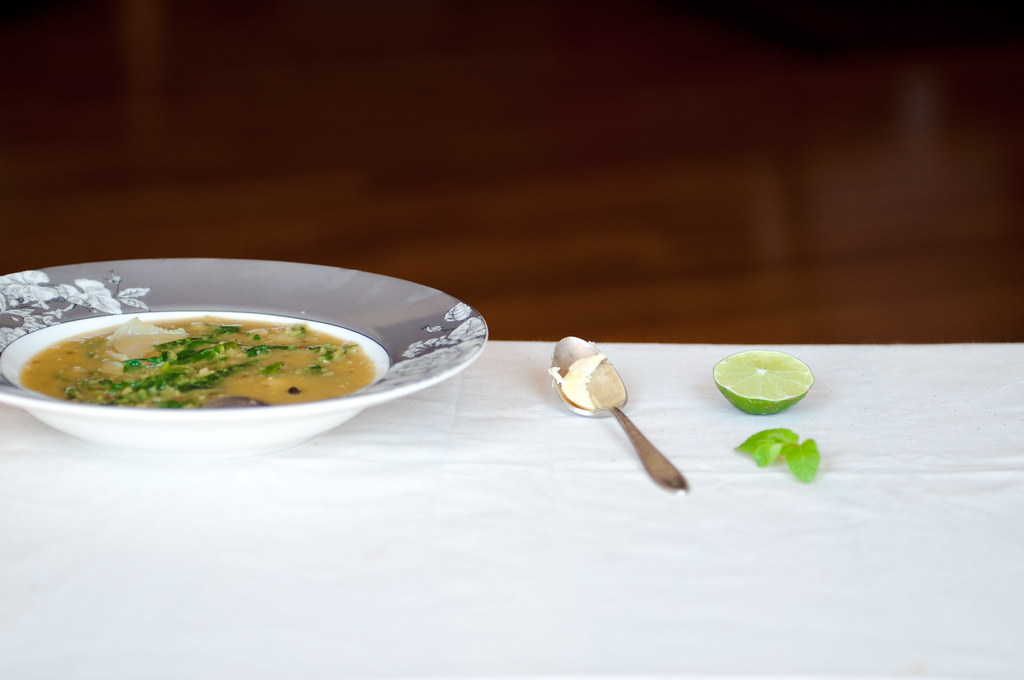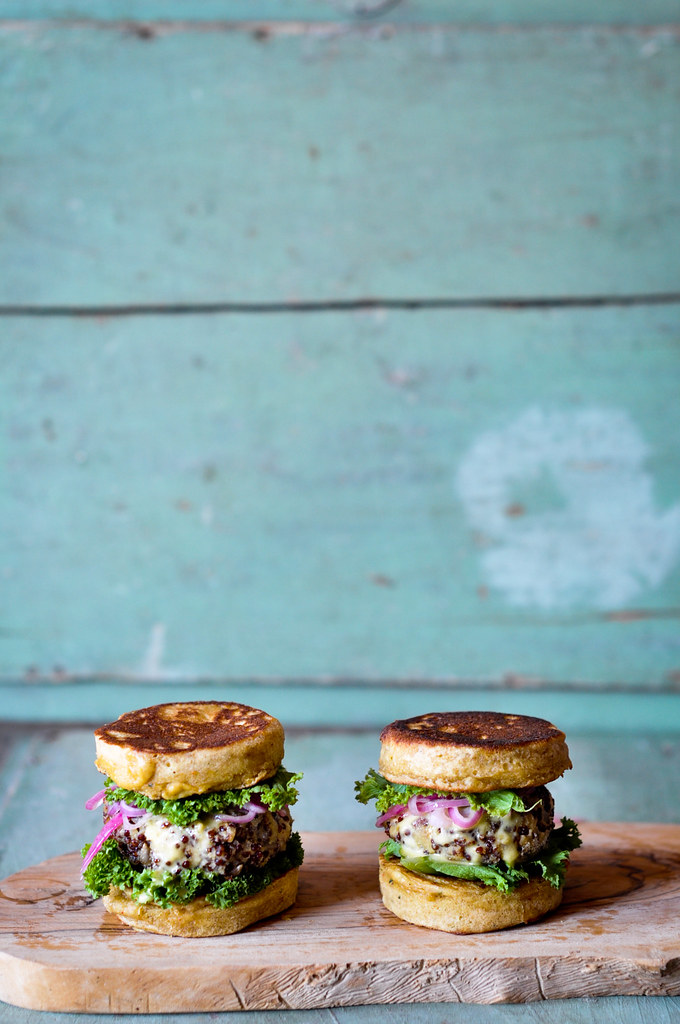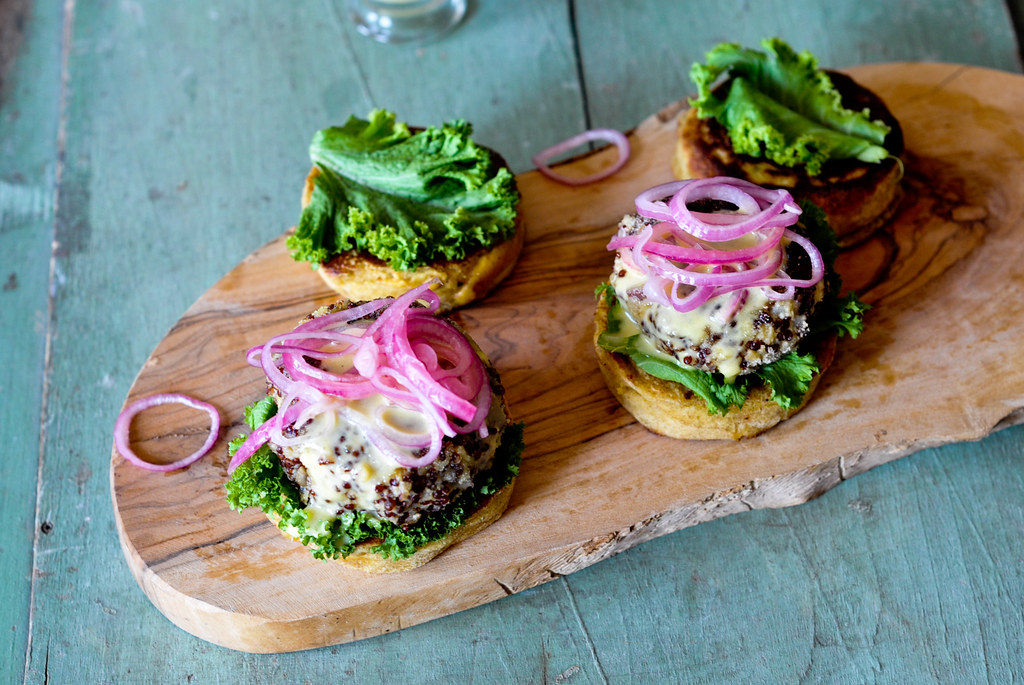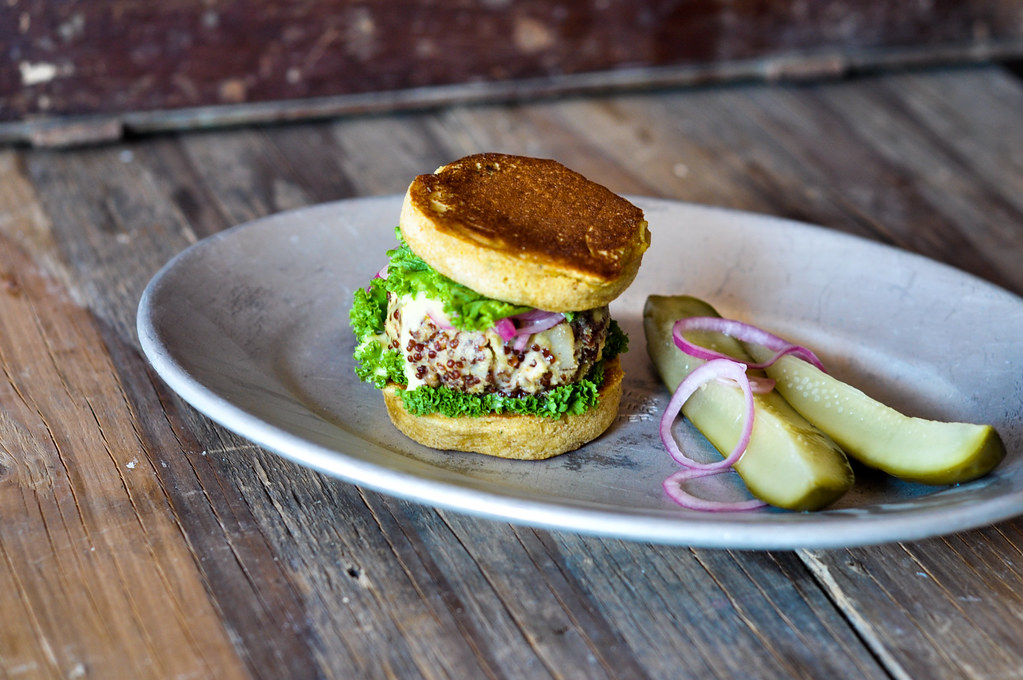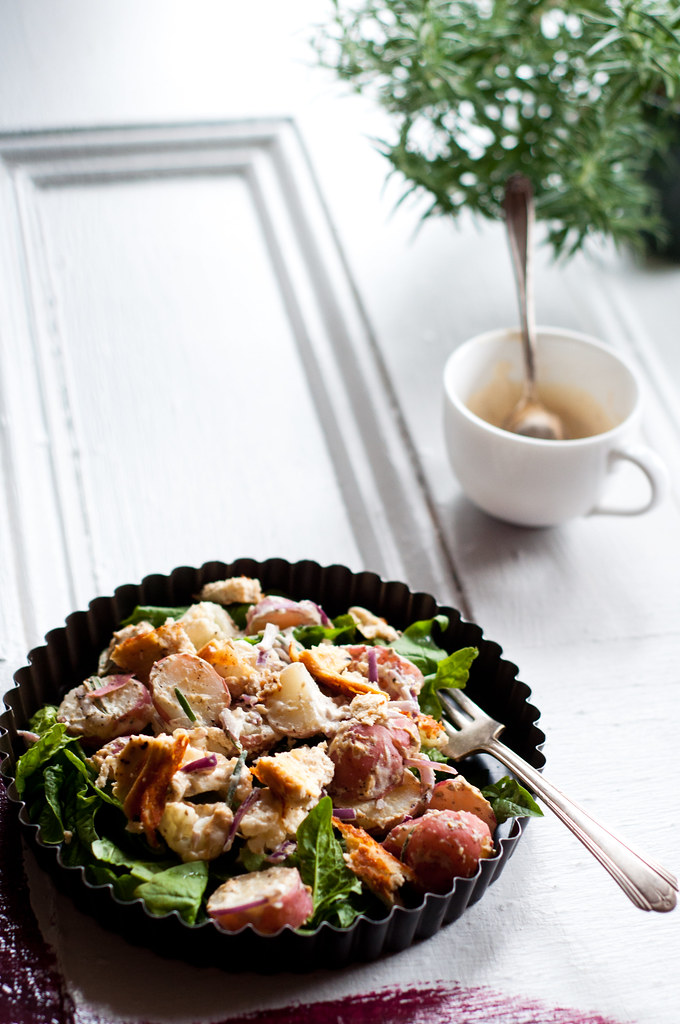
At the core of it the potato is a humble vegetable. Salt of the earth kind. One that has no frills on. It is what it looks like. No layers or fancy schmacy building of flavor as you chew on it. Just honest, wholesome food.
Yet, it has been at the center of many a revolution. From economic turmoil after the potato famine to the emergent Californian trend setting of fingerlings and purple potatoes. Spuds have had their hey days in several shapes and forms. From Russia to Ireland, it has been a staple of the poor man's diet and from East to the West coast of US it has been the darling of farmers' markets.
I doubt any other vegetable has been fodder and food and happily accepted as both by man and beast.

I remember growing up on a lot of it. It was fried, spiced, curried and all manner of things were done with it. Then I left India and I ate it a few more ways - baked, frenched, roasted, steamed, with and without skin. Over the years, I have found my favorite varieties. I always gravitate to the red jacket ones. Except when they are new potatoes. I like the non-powdery cores. I like them waxy. I am not a french fry but if you give shoe string fries with rosemary or truffle, I won't say no. My favorite way to eat them is when they are small and roasted whole with rosemary and lots of pepper.
Recently, I picked up a bag of new potatoes and decided to do something different. I wanted something not hot. So no roasted spuds. Well, salad it was to be. This is simple salad that everybody knows of and has their own childhood or adult version of. Except mine has an unique dressing. That is all that is different and I think it is bold enough to warrant a whole post about it. It really makes this salad.
One recipe three dishes!

The basic protein is cottage cheese and it makes an incredible creamy base. You can bake any leftover dressing too. In fact, I used some of this creation as a dressing and baked the rest and crumbled it into my salad. It is really good. Take my word for it! Or, don't. Try it out and tell me you don't like it! :)
I tossed in some spinach, raw onion and rosemary along with the potatoes and it was scrumptiously satisfying!
Also, it is a raw dressing made with raw yolk and whites. So, I highly recommend consuming all of it as soon as it is made. If you don't eat raw eggs, then I have another reason for you to make this dressing anyway. It makes a great savory cheese cake when baked. If you want to make it a whole meal, you can use it as a tart filling and pour into a crust!
Cottage Cheese Salad Dressing
3/4 cup drained cottage cheese
1 small egg
2 tsp olive mustard or Dijon mustard
1 T oil
salt, pepper as needed
To make the dressing, whip all the ingredients into a creamy sauce like consistency.
Bake any unused dressing into a cake below within 24 hours.
Savory Cottage Cheese Cake
To bake as tart, simply use the recipe below to make the filling and bake in a par-baked tart shell
3/4 cup drained cottage cheese
1 small egg
2 tsp olive mustard or Dijon mustard
1 T oil
salt, pepper as needed
Preheat oven to 350 F.
Whip everything together and pour into a prepared baking tin.
Bake for 20-25 minutes until golden on top and set in center. Crumble into salad or eat as a tart.

